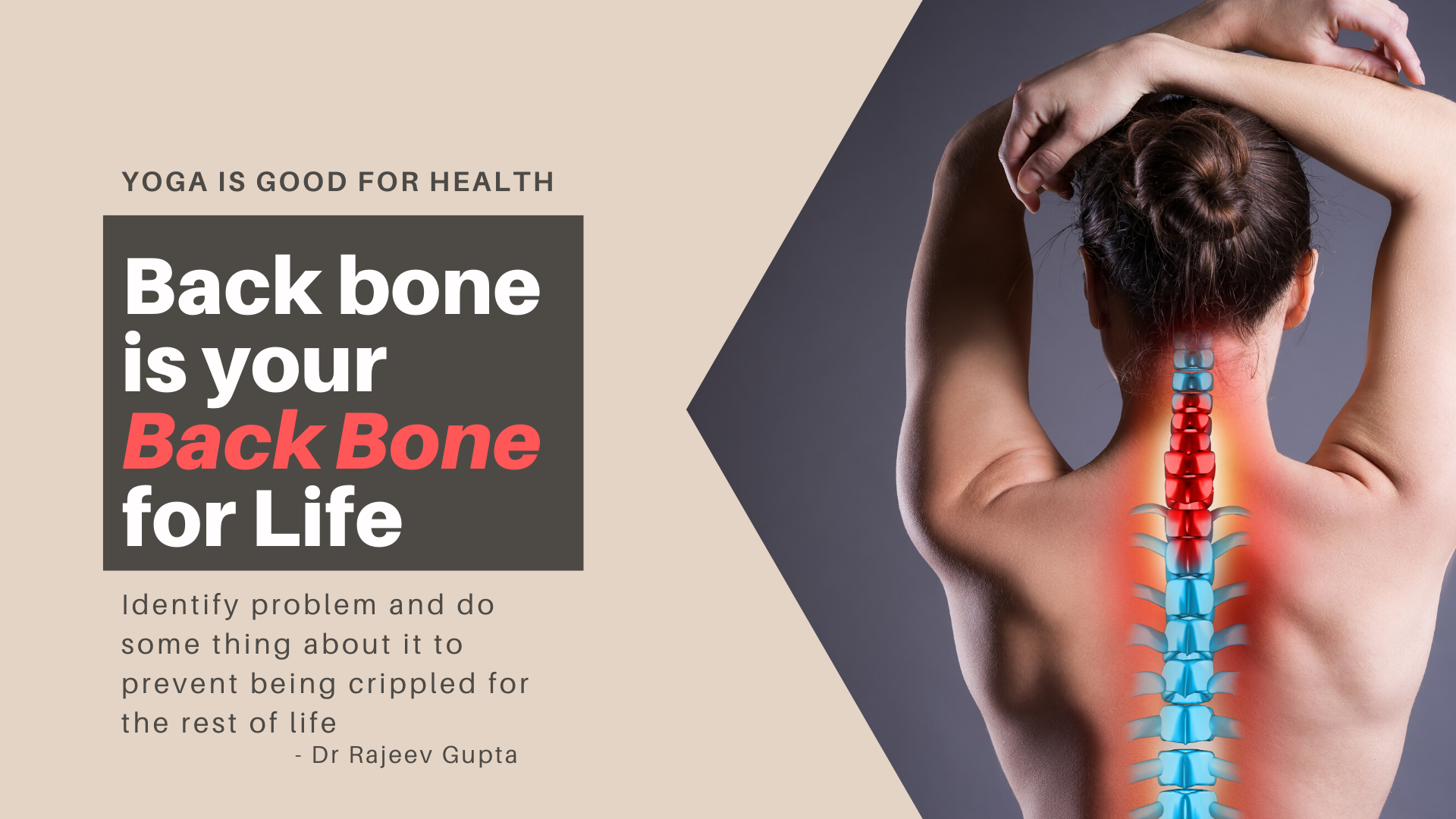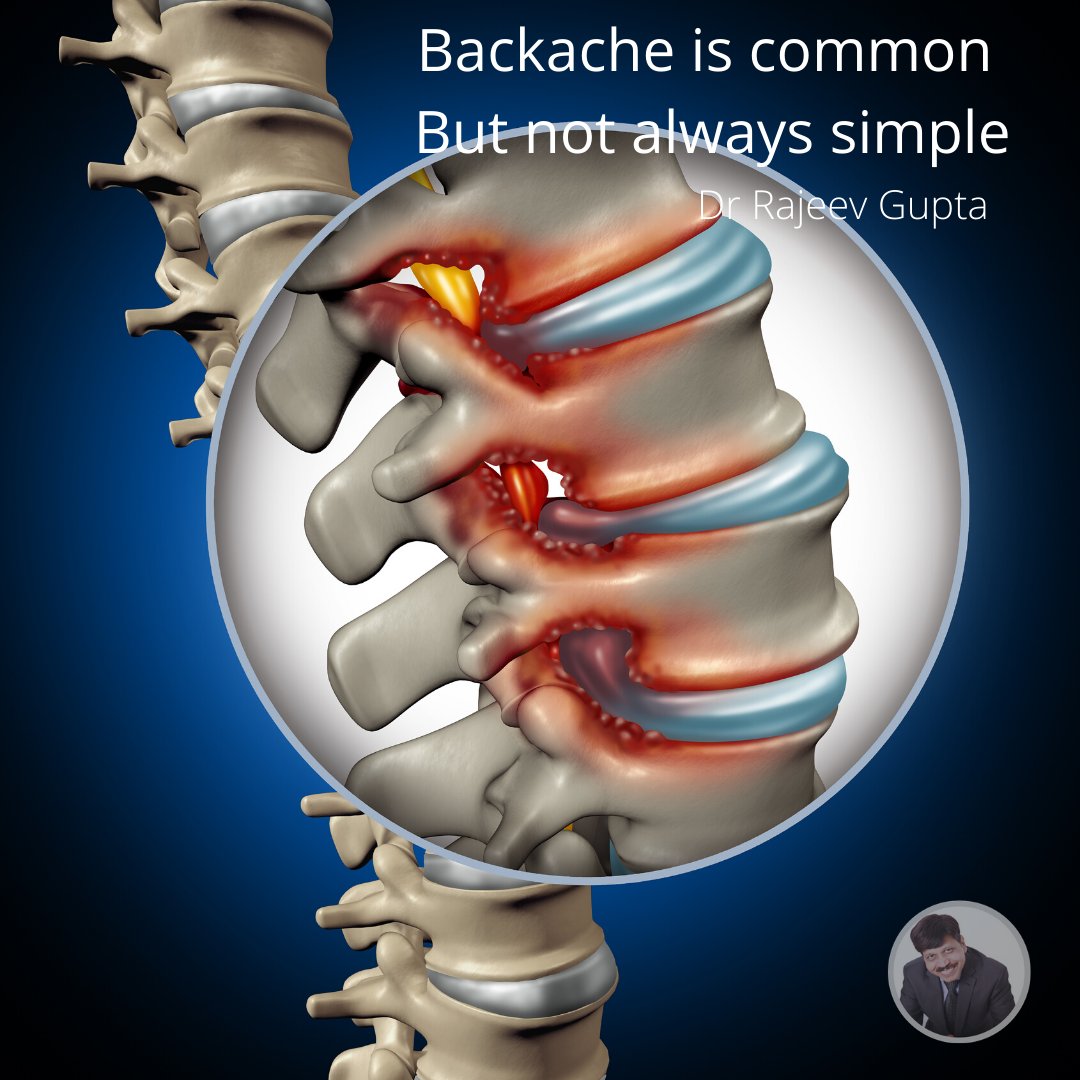Spine has all weight
Back pain is very common and usually improves within a few weeks or months.
Common difficult problem
Backache is common but can be risky
Back pain is common: it is estimated that 60-80% of the population have back pain at some time during their life with between 14-30% having some pain on the day of interview and 30-40% of people reporting some pain within the previous month. About 5-10% will have some degree of back trouble for long periods of their life and 3-4% of the population aged 16-44 and 5-7% of those between 45 and 64 will report back problems as a chronic sickness
Think of cause
Types of Low Back Pain
Acute (<6 weeks) Subacute (6-12 weeks) Chronic (>12 weeks)
Postural syndrome
Its due to a mechanical deformation of normal soft tissue from prolonged end range loading of periarticular structures (static deformation of spine). Pain may be local and reproducible when end range positions, such as slouching, are maintained for sustained periods of time. Treated by improving posture and avoiding provocative posture
Dysfunction syndrome
Its due to adaptive shortening, scarring or adherence of connective tissue causing discomfort. Consistent movement loss and pain at the end range of movement. Treated by mobilization in the direction that reproduces pain (remodelling of tissues)
Derangement syndrome
Its due to disturbance in the normal resting position of the affected joint surfaces. May show one direction of repeated movement which decreases or centralizes referred symptoms – preferred direction.
Mechanical Pain
Degenerative: Spondylosis, Intervertebral disc degeneration, Lumbar non-spondylolytic spondylolisthesis, Ankylosing spinal hyperostosis, Lumbar spina canal stenosis Trauma: Lumbar intervertebral disc herniation, Vertebral fractures Congenital: Spina bifida, Severe kyphosis, Severe scoliosis, Transitional vertebra
Non-mechanical
Neoplasia: Multiple myeloma, Metastatic carcinoma, Spinal cord tumors, Lymphoma and leukemia, Retroperitoneal tumors, Primary vertebral tumors (Osteoid osteoma, Eosinophilic granuloma) Inflammatoy arthritis: Ankylosing spondylitis, Reiter syndrome, Psoriatic spondylitis, Enteropathic spondyloarthritis (IBD) Infection: Osteomyelitis (TB, Purulent), Paraspinous abscess, Septic diskitis Osteochondrosis: Scheuermann disease
Psychogenic
Anxiety Depression Fibromyalgia Adjustment disorders at home, work, etc. Verbal reinforcement increases performance in back pain patients. Spouse solicitousness is correlated with pain behaviour. Prospective studies show that onset of disabling pain is highly associated with job dissatisfaction, lack of support at work, stress, and perceived inadequacy of income


What are the causes of low back pain?
Strains
The muscles and ligaments in the back can stretch or tear due to excess activity. Symptoms include pain and stiffness in the lower back, as well as muscle spasms. Rest and physical therapy are remedies for these symptoms.
Sciatica
Sciatica can occur with a herniated disc if the disc presses on the sciatic nerve. The sciatic nerve connects the spine to the legs. As a result, sciatica can cause pain in the legs and feet. This pain usually feels like burning, or pins and needles.
Disc injury
The discs in the back are prone to injury. This risk increases with age. The outside of the disc can tear or herniate. A herniated disc, which is also known as a slipped or ruptured disc, occurs when the cartilage surrounding the disc pushes against the spinal cord or nerve roots. The cushion that sits between the spinal vertebrae extends outside its normal position. This can result in compression of the nerve root as it exits from the spinal cord and through the vertebral bones. Disc injury usually occurs suddenly after lifting something or twisting the back. Unlike a back strain, pain from a disc injury usually lasts for more than 72 hours.
Spinal stenosis
Spinal stenosis is when the spinal column narrows, putting pressure on the spinal cord and spinal nerves. Spinal stenosis is most commonly due to degeneration of the discs between the vertebrae. The result is compression of the nerve roots or spinal cord by bony spurs or soft tissues, such as discs. Pressure on the spinal nerves causes symptoms such as: Numbness Cramping Weakness You might feel these symptoms anywhere in the body. Many people with spinal stenosis notice their symptoms worsen when standing or walking.